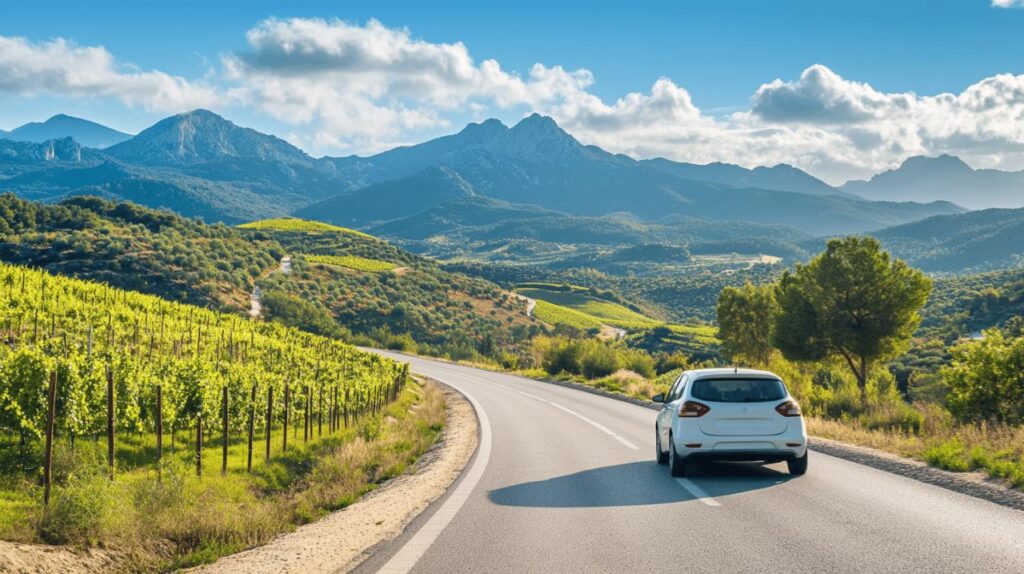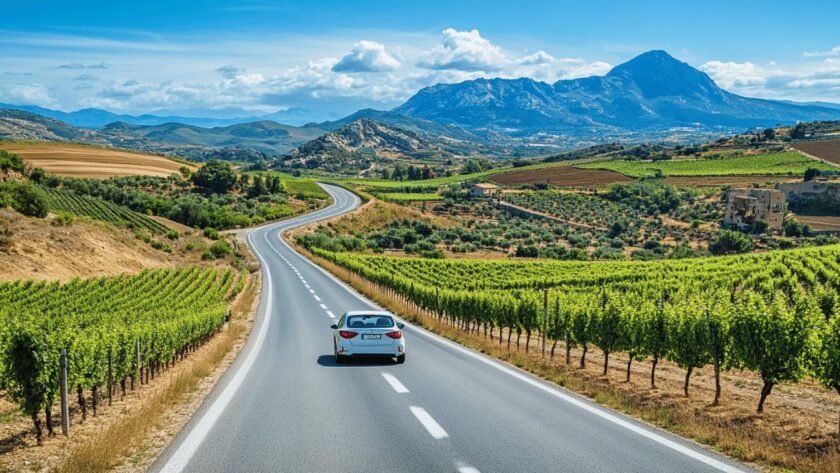Exploring Spain’s stunning landscapes becomes an unforgettable adventure when you have the freedom to travel at your own pace with a rental car. From the sun-drenched coasts of Andalusia to the rugged mountains of the Picos de Europa, a rental vehicle gives you access to both iconic destinations and hidden gems across this diverse country.
Navigating rental procedures and requirements
Renting a car in Spain requires understanding specific procedures that may differ from your home country. Planning ahead ensures a smooth experience when picking up your vehicle and sets you up for a stress-free journey through Spain’s varied terrain.
Essential documents and age restrictions
Before heading to the rental counter, gather all necessary documentation. You’ll need your valid driver’s license, passport, and a credit card in the renter’s name for the security deposit. Non-EU citizens should obtain an International Driver’s Permit, which costs approximately $15 USD and remains valid for one year. Most rental agencies maintain minimum age requirements of 21 years, with some companies setting the bar at 23 years or higher. Drivers under 25 often face additional charges, so factor this into your budget if traveling through El Rincón Cunqueiru or other scenic regions with younger drivers in your group.
Insurance options and fuel policies
While basic third-party liability insurance comes standard with Spanish rentals, considering comprehensive coverage provides greater peace of mind. The Collision Damage Waiver (CDW) protects against vehicle damage, while theft protection safeguards against potential car theft. Many travelers find better rates by purchasing insurance through third-party providers rather than directly from rental companies. Regarding fuel, familiarize yourself with the rental company’s policy—some require full-to-full returns while others offer prepaid options. Current gasoline prices average around 1.90 EUR per liter (approximately 7.20 EUR per gallon), with ‘gasolina’ referring to gasoline and ‘gasóleo’ to diesel fuel.
Mastering spain’s varied driving conditions
Renting a car in Spain offers the perfect opportunity to explore this diverse country at your own pace. From the snow-capped Pyrenees to sun-drenched coastal roads and bustling city centers, Spain presents drivers with unique challenges across its varied landscapes. Navigating these different terrains requires specific knowledge and preparation. When planning your Spanish road trip adventure, understanding the distinct driving conditions can make your journey both safer and more enjoyable.

Mountain roads vs coastal routes
Spain’s mountain roads demand different driving skills compared to its coastal highways. In mountainous regions like the Picos de Europa or Sierra Nevada, roads typically feature sharp turns, steep gradients, and spectacular but potentially distracting views. During winter months, snow chains may become mandatory equipment in these high-altitude areas. Many rental companies can provide these upon request, though availability should be confirmed when booking your vehicle.
Coastal routes offer their own distinct character. While generally well-maintained, these roads can become congested during summer tourist seasons, particularly along popular destinations in Andalusia and Catalonia. The speed limit on main coastal roads typically ranges from 80-100 km/h, but actual driving conditions might necessitate slower speeds around scenic curves. When planning your rental, consider that smaller cars often navigate these winding coastal roads more easily than larger vehicles. Most major rental companies like Sunny Cars and Discover Cars offer appropriate vehicle options for these routes.
City driving and rural area considerations
Navigating Spain’s cities presents a different set of challenges from rural driving. Madrid and Barcelona have implemented low-emission zones requiring specific vehicle stickers, which your rental company should provide if applicable. City speed limits typically range from 30-50 km/h, with strict enforcement. Parking in urban centers can be challenging—blue lines indicate paid street parking, while green lines designate resident-only areas. Many experienced travelers opt to park outside city centers and use public transport to avoid urban traffic congestion, especially during rush hours.
Rural Spanish roads offer a contrasting experience. While the national highway network of autopistas (AP, toll roads) and autovías (A, free highways) is excellent with speed limits of 120 km/h, venturing onto smaller rural roads requires careful navigation. These secondary routes connect charming villages across regions like Extremadura and Castilla-La Mancha but may have limited signage. Fuel stations can be sparse in remote areas, so maintaining a generous fuel reserve is advisable. The standard rental requirements apply regardless of your destination: valid driver’s license, passport, credit card for the security deposit, and for non-EU citizens, an International Driver’s Permit (costing approximately $15 USD).
Most rental companies set a minimum age requirement of 21 years (sometimes 23), with additional fees for drivers under 25. Insurance options include mandatory third-party liability coverage, though supplementing with Collision Damage Waiver protection is highly recommended given the varied terrain. Whether exploring mountainous regions, coastal routes, bustling cities, or tranquil countryside, booking your rental vehicle well in advance ensures better rates and greater vehicle selection, particularly during peak summer months when prices typically increase.




